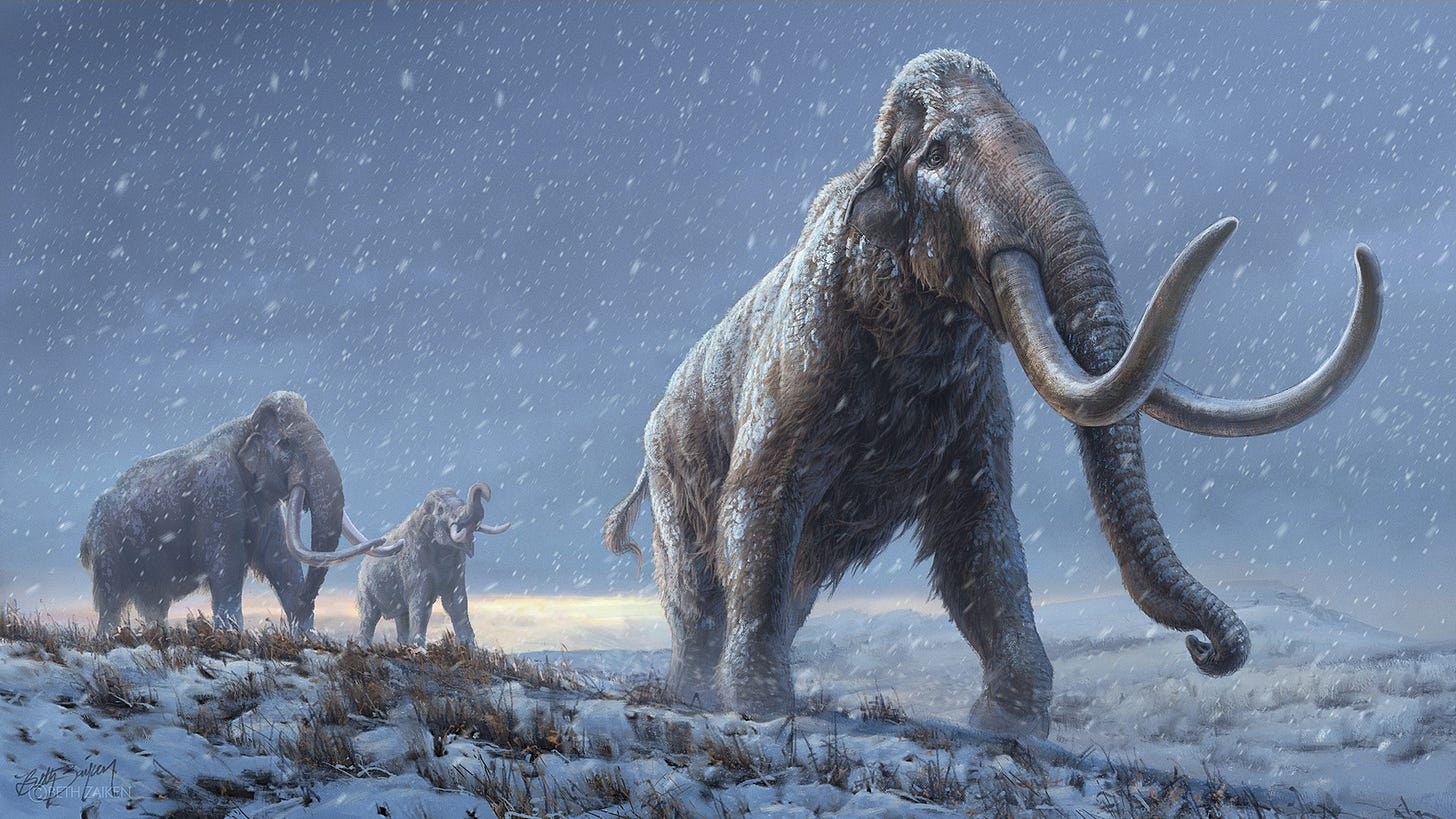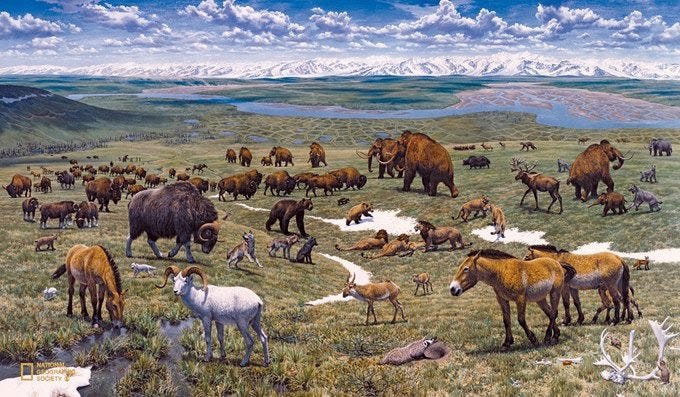Harvard-linked U.S. biotech startup Colossal Biosciences just claimed that they will bring back the woolly mammoth within six years. It’s at least somewhat plausible and could make possible a major climate solution.
Tell Congress to support de-extinction research in America!
Touch or scan the QR code below to take today’s action in the app and earn trees!
Or take action on the Internet – no app required!
Reasons For Hope
Harvard-linked U.S. biotech startup Colossal Biosciences recently raised $200 million in investment. They now claim that they will bring back the woolly mammoth (or at least an Asian elephant embryo gene-edited with CRISPR to express woolly mammoth genes originating from frozen mammoth tissue found in Siberia) within six years.
Leaving aside philosophical questions, the return of mammoth-like creatures would open up the potential for amazing future progress on what could someday become a major rewilding-driven climate solution. Researchers have calculated that a future long-term renewal of the lost “mammoth steppe” ecosystem could sequester a whole lot of carbon while preventing runaway permafrost melting and methane release.
“This grassland ecosystem – called the ‘mammoth steppe’ – existed during the Pleistocene period, but was lost when large herbivores such as woolly mammoths went extinct. Horses and bison could act as eco-engineers to transform present day tundra back to grassland. By removing woody vegetation, enhancing grass growth, and trampling on snow in search of winter forage, large mammals increase the amount of incoming solar energy that bounces back to space – known as albedo. Grasslands also favour the capture of carbon in the deep roots of grasses, and enable cold winter temperatures to penetrate deeper into the soil. Altogether, these changes would have a net cooling effect on Arctic lands and delay permafrost melt…
The Oxford-led study estimates that carbon emissions from thawing permafrost could be around 4.35 billion metric tonnes per year over the 21st century. This is around half as much as fossil fuels emissions and three times more than estimates of the emissions produced by current and projected land use change.”
— University of Oxford
Humanity may soon restore, if not a “true” mammoth, at least functioning mammoth genes, behaviors, and ecological roles to Anthropocene Earth. Fascinating work! If this effort succeeds, it would be a new milestone in an already-successful history of “genetic resurrection” boosting conservation of America's wild heritage1.
There are many, many unknowns in this situation, but the upside potential is high enough that it certainly seems worth a try. Policy makers should know that their constituents support giving projects like this a chance.









While I find the lost world of the Pleistocene absolutely fascinating, and have posted on that a few times, I think it's quite a big thing to say 'leaving philosophical questions aside'. I can't help thinking we are better off protecting the large mammals that remain, rather than investing huge sums in reengineering those that we have already wiped out.
What could go wrong?😵💫